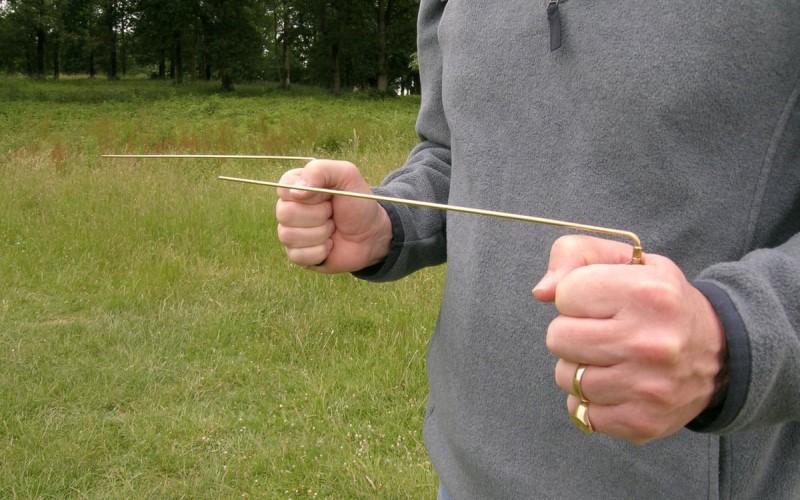The search for underground water has been a crucial endeavor for civilizations throughout history. As populations grow and water scarcity becomes an increasingly pressing issue, understanding the realities of underground water detection is more important than ever. This article aims to debunk five common myths associated with underground water detection, shedding light on the complexities and realities of this essential process.
Understanding Underground Water Detection
Definition and Importance
Underground water detection involves identifying and locating water resources beneath the earth’s surface. This process is vital for agricultural, industrial, and municipal water supplies, particularly in arid regions where surface water is scarce.
Historical Context
Historically, various methods have been used to locate underground water, from ancient dowsing rods to modern geophysical techniques. Understanding this evolution helps us appreciate the advancements and persistent misconceptions in the field.
Myth 1: Underground Water Detection is Easy and Inexpensive
Origins of the Myth
The perception that finding underground water is straightforward likely stems from anecdotal successes and oversimplified portrayals in media.
The Reality of the Process
In reality, detecting underground water is a complex and resource-intensive task. It requires a combination of geological surveys, geophysical methods, and often, significant financial investment.
Technical and Financial Challenges
The challenges include understanding geological formations, interpreting geophysical data, and the high costs of drilling and equipment. Accurate detection demands skilled professionals and advanced technology, which contribute to the overall expense.
Myth 2: You Can Find Water Anywhere by Digging Deep Enough
Geological Factors
The distribution of underground water is heavily influenced by geological formations. Aquifers, which store groundwater, are not uniformly distributed and depend on the porosity and permeability of the rocks.
Water Table Variability
The depth of the water table varies greatly depending on the location, climate, and season. In some areas, water may be abundant just a few meters below the surface, while in others, it might be hundreds of meters deep or entirely absent.
Success Rates of Deep Drilling
Drilling deep does not guarantee to find water. The success rate depends on thorough preliminary surveys and an understanding of the local geology, making deep drilling a risky and often costly endeavor without proper planning.
Myth 3: Modern Technology Guarantees 100% Accuracy
Limitations of Current Technologies
While modern technologies such as Ground Penetrating Radar (GPR) and electrical resistivity tomography (ERT) have significantly improved our ability to detect underground water, they are not infallible. Various factors like soil composition, rock types, and environmental conditions can affect accuracy.
Common Misconceptions
There is a misconception that technological advancements equate to guaranteed success. However, even the most advanced methods can only increase the probability of finding water, not assure it.
Expert Opinions
Experts emphasize that while technology has advanced, the interpretation of data remains crucial. Misinterpretations can lead to false positives or negatives, underlining the need for experienced professionals in the field.
Myth 4: Underground Water is Always Pure and Safe to Drink
Natural Contaminants
Underground water can contain natural contaminants such as arsenic, fluoride, and heavy metals, which can pose significant health risks if consumed untreated.
Human-induced Pollution
Industrial activities, agricultural runoff, and improper waste disposal can lead to contamination of groundwater sources with chemicals, pesticides, and pathogens.
Water Treatment Solutions
Ensuring that groundwater is safe for consumption often requires treatment processes to remove contaminants. Techniques such as filtration, chemical treatment, and reverse osmosis are commonly employed to purify water.
Myth 5: Dowsing and Divining Rods are Reliable Methods
Historical Usage of Dowsing
Dowsing, the practice of using rods to locate underground water, has been used for centuries. Despite its historical prevalence, it lacks scientific validation.
Scientific Scrutiny and Studies
Numerous studies have tested dowsing, consistently finding it no more effective than chance. Scientific consensus holds that dowsing does not work and relies on the ideomotor effect, where involuntary movements guide the rods.
Alternative Reliable Methods
Reliable methods for detecting underground water include geophysical surveys, borehole drilling, and remote sensing technologies, all of which are grounded in scientific principles and offer higher accuracy.
Modern Techniques in Underground Water Detection
Geophysical Methods
Techniques such as seismic reflection, electrical resistivity, and magnetic surveys help map subsurface characteristics and locate potential water-bearing formations.
Remote Sensing Technologies
Satellite imagery and aerial surveys provide valuable data on surface features that indicate the presence of underground water, such as vegetation patterns and soil moisture.
Ground Penetrating Radar (GPR)
GPR uses radar pulses to image the subsurface, helping identify changes in material composition that may indicate water presence. It is especially useful for shallow investigations.
Environmental and Economic Impacts
Sustainable Water Management
Effective underground water detection and management are critical for sustainable water use, ensuring long-term availability for various needs without depleting resources.
Cost-Benefit Analysis
While the initial investment in advanced detection methods can be high, the benefits of accurate water location and reduced drilling failures often outweigh the costs, leading to more efficient resource use.
Long-term Implications
Properly managed underground water resources can mitigate water scarcity, support agriculture, and promote economic stability, highlighting the importance of reliable detection methods.
Case Studies and Real-life Examples
Successful Implementations
Examples of successful water detection projects demonstrate the effectiveness of combining geological surveys with modern technologies, resulting in sustainable water extraction.
Challenges Faced and Solutions Found
Real-life case studies also highlight challenges such as unexpected geological formations and contamination issues, showcasing how adaptive strategies and technologies can overcome these obstacles.
Expert Insights
Quotes from Hydrologists
Leading hydrologists provide insights into the complexities of underground water detection, emphasizing the importance of interdisciplinary approaches and continuous technological advancements.
Research Findings
Recent research underscores the ongoing development in detection technologies and methodologies, aiming to improve accuracy and reduce environmental impact.
FAQs
How does underground water detection work?
Underground water detection involves using geological and geophysical methods to locate aquifers. Techniques include seismic surveys, electrical resistivity, and remote sensing.
Is it possible to find water anywhere by digging?
No, the presence of underground water depends on geological formations and local conditions. Thorough preliminary surveys are necessary to assess the likelihood of finding water.
Are dowsing rods effective for finding water?
Scientific studies have shown that dowsing rods are not effective and rely on the ideomotor effect. Reliable methods are based on scientific principles and technology.
Is underground water always safe to drink?
Not necessarily. Underground water can contain natural and human-induced contaminants. Proper treatment is often required to ensure safety.
What technologies are used in modern water detection?
Modern techniques include Ground Penetrating Radar (GPR), electrical resistivity tomography (ERT), and remote sensing technologies.
Conclusion
Debunking myths about underground water detection is crucial for managing this vital resource effectively. While modern technologies have improved our capabilities, understanding the limitations and challenges remains essential. By relying on scientific methods and continuous advancements, we can ensure sustainable and safe access to underground water resources.







Be First to Comment